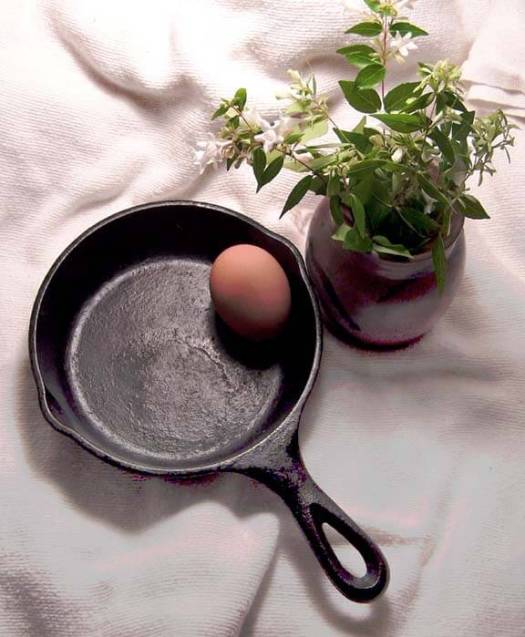I have before me an article out of one of those upscale magazines devoted to the South as an intellectual and cultural milieu. This magazine is printed on the finest paper, has photographs taken by talented people, and if you put it on your coffee table, you’re liable to impress someone with your je ne sais quoi.
Inside, an article on Southern food (ever-so-quaintly called “fixin’s”) targets “a grand grits revival.” The author cites grits pilaf, grits croquettes, stone-ground grits with morels, Southern fried grits, grits crackers, Logan Turnpike grits (God only knows what that is), and sweetbreads with grits as evidence of this renaissance.
People, this is chic commercial jive operating under the auspices of promoting a naturally progressive cuisine. Southern cooking is progressive; as new ingredients become available they’re assimilated into traditional recipes, often with good results, and as far as cultural assimilation is concerned, Southern cooking is a brilliant hodgepodge of distinct cultural influences, Native American, West European, and African, the tripod which forms the basis of the cuisine itself, and as new peoples with different traditions move into the region over time the such basic elements as grits as we know them will reflect these changes in wonderful ways we can’t begin to fathom.
But a shotgun wedding with French cuisine (or any other cuisine, for that matter) is much too artificial to be taken seriously. This effort seems more intended to get people to pay exorbitant amounts for a serving of grits than it is to create a compatible blend of ingredients. For better or worse, grits are versatile; they’re essentially starch, as are potatoes, rice or pasta. But can you honestly claim as the author does that adding “innovative twists and fresh accents” such as morels and/or sweetbreads to grits that you have a dish that “reflect(s) the changing nature of the South”?
I think not. For one thing, these recipes are the products of commercial establishments, of upscale restaurants designed to attract diners who have the time and money to eat at high-end tables. Recipes such as these tend to be the brainchildren of down-home boys and girls raised on their mothers’ or grandmothers’ good Southern cooking who travel to France where they stay in Paris or Provençe, sopping up the local hubris, naturalizing their schoolroom French and drinking themselves into a pixilated delusion of fraternity with the local Jaques Bonhommes on the local vin ordinaire.
While there, they of course become so enamored of le haute cuisine de la France that they decide to launch a personal crusade bent on transforming the cuisine bourgeoise of the American South into “exciting food.” This is to say, of course, food that people will pay a lot of money for because they are “infused with French accents . . . and render (sic) with some finesse.”
For another thing, these commercial recipes are subject to the whims of restaurants, which are notorious for posturing. They have to be. If such recipes reflect the changing nature of the South, then the reflection is of a superficial and ephemeral nature. If foods can indeed be considered a barometer for a region’s or a nation’s changing identity—and they very well can, if examined properly—then foods should reflect such profound and lasting changes as those brought about by shifting demographics and to a somewhat lesser extent technological advances.
To be trendy and fashionable our dishes must be finessed. Is Southern food in, you say? Well, yes, but then it does need sprucing up a bit, doesn’t it? Let’s take that plain fried chicken and serve it on squash waffles with peach salsa. Black-eyed peas? Let’s puree them, pat them out into cakes and fry them in olive oil and serve them with an herb-laden tomato puree. Grits? Yes, with morels, sweetbreads and jalapenos, deep-fried and served with cranberry chutney . . . This cooking is catchy to be sure, but I hardly think it’s significant.
Our best foods are narratives embedded in time and place, told by people for whom cooking is a conversation, not the monologue of a flim-flam chef manqué.











